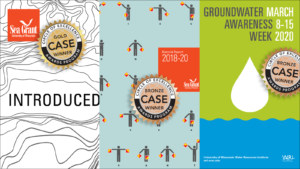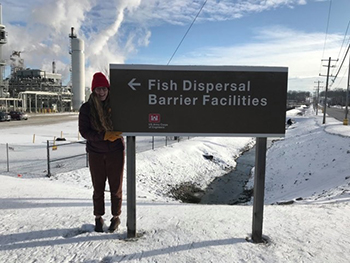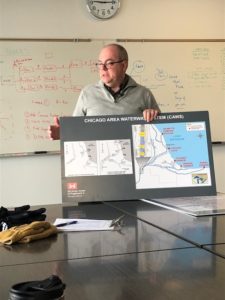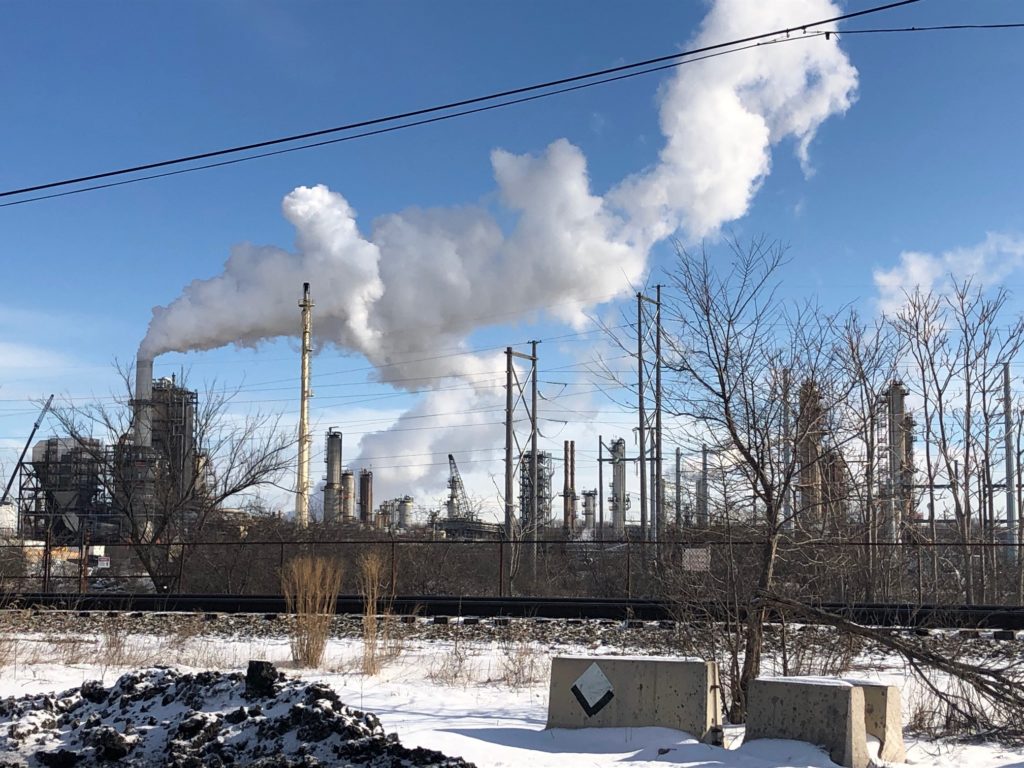“Introduced” podcast wins national award
The Association of Natural Resource Extension Professionals (ANREP) last week announced the winners of its 2022 national awards competition. Titus Seilheimer, fisheries specialist; Tim Campbell, aquatic invasive species specialist; Bonnie Willison, digital storyteller; and Sydney Widell, a University of Wisconsin-Madison graduate student in Freshwater and Marine Sciences and formerly an undergraduate employee of Sea Grant, won a gold award for their work on the podcast series “Introduced.”
“Introduced” spans two seasons with 18 episodes that explore stories of aquatic invasive species in Wisconsin, like rusty crayfish, purple loosestrife and spiny waterfleas.
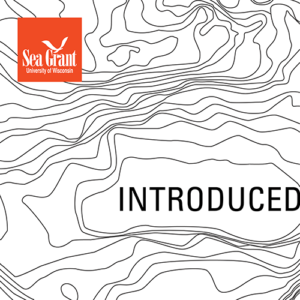
Sea Grant’s Yael Gen designed the cover art for the podcast series.
“Creating this podcast was personally satisfying. It was the first time I’d done podcasting and the easy on-air rapport I had with Sydney made it all the more rewarding,” Willison said. “We learned a lot about the changes that invasive species bring to our cherished lakes streams and wetlands and we talked to many inspiring people who are devoted to protecting our waters.”
Willison also credits Campbell and Seilheimer for making the podcast so effective and educational.
“When I heard Bonnie was going to lend her considerable talents to a new podcast series and that series would focus on aquatic invasive species, I was excited for the opportunity to dive deeper into some AIS topics and highlight voices and stories that could help us understand the complexity of those issues,” Campbell said. He appears in seven episodes and provided overall consultation on the series.
Seilheimer, too, welcomed the opportunity to participate—offering advice on the podcast series’ direction and featured in four episodes. “Podcasts are an innovative way to reach all kinds of audiences with the kind of prevention messages we want to share. Everyone can play a role in conserving our natural environments.”
Co-hosts Willison and Widell interviewed more than 60 people for the series. The guests included resource managers, recreational fishers and researchers, as well as people from nongovernmental organizations and private businesses.
The ANREP awards honor natural resource programs and people. The organization is a national association for cooperative extension service professionals working in environmental education, fisheries, forestry, wood sciences, range, recreation, waste management, water, wildlife, energy and related disciplines at the county, area, state or national level.
The post “Introduced” podcast wins national award first appeared on Wisconsin Sea Grant.
News Releases | Wisconsin Sea Grant
News Releases | Wisconsin Sea Grant
https://www.seagrant.wisc.edu/news/introduced-podcast-wins-national-award/?utm_source=rss&utm_medium=rss&utm_campaign=introduced-podcast-wins-national-award

